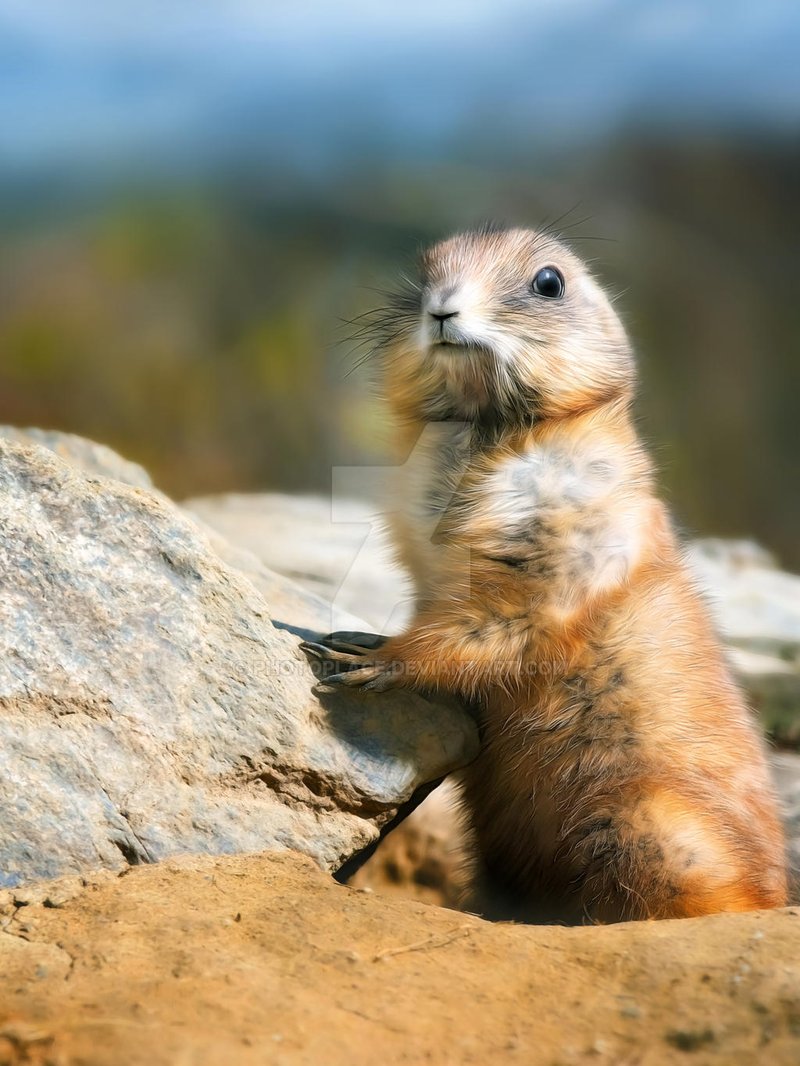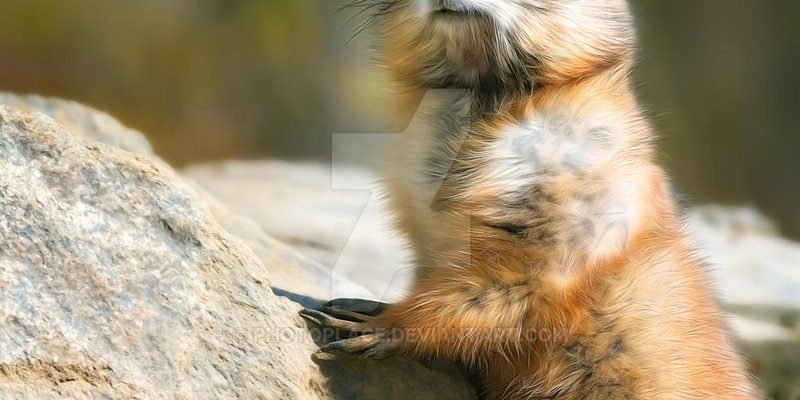
Understanding the prairie dog is key. They may look cute and small, but they play a crucial role in their ecosystem. Think of them as the caretakers of the prairie—they dig extensive burrow systems that not only serve as homes but also create habitats for other animals. So, if you find yourself in the presence of these charming creatures, knowing how to interact—or not interact—with them can make your experience both enjoyable and safe.
Recognizing a Prairie Dog
First things first, let’s make sure you can identify a prairie dog. They’re small rodents, usually weighing between 1.5 to 3 pounds and measuring around 12 to 15 inches. You might spot their sandy or grayish-brown fur and that characteristic bushy tail. Most commonly, you’ll see them perched on their hind legs, keeping a lookout for predators or perhaps just enjoying the sun.
Their social behavior is fascinating. Prairie dogs live in large colonies called “towns,” which can house hundreds or even thousands of individuals. Just imagine a lively neighborhood filled with little furry folks going about their day, chattering and digging. Their communication includes a range of barks and chirps, helping them alert each other about potential dangers. So, if you hear a bunch of excited sounds, you might just be peeking in on a prairie dog meeting.
Staying Calm During the Encounter
You might be wondering what to do if you suddenly find yourself face-to-face with a prairie dog. The most important rule is to stay calm. Just like a surprise encounter with an unexpected friend, panicking will only make things awkward. Instead, take a moment to observe. Watch how they interact with their environment, and notice their behavior. This is their home, and you’re just a visitor.
If you’re close enough and they seem relaxed, you can enjoy the moment. However, if they start to act skittish, it’s best to back off slowly. Remember: prairie dogs can sense stress, and your sudden movements might trigger their alarm calls. It’s all about being respectful. Just as you wouldn’t walk into someone’s home uninvited, give them space to feel secure in their territory.
What to Avoid When Encountering Prairie Dogs
Now that you know how to handle your encounter, there are definitely some things you should avoid. First off, do not try to touch or feed the prairie dog. While they seem friendly, they are wild animals and can be unpredictable. Feeding them can lead to health problems for them and create dependency on humans, which isn’t good for their natural habits.
Another thing to avoid is making loud noises or sudden movements. It’s like trying to enjoy a peaceful day at the park when someone is blasting music—uncomfortable for everyone involved. Instead, keep your distance, talk quietly, or just enjoy the silence of the moment. If you have pets with you, make sure they’re leashed to ensure that the prairie dog feels safe.
Understanding Their Habitat
Knowing about the prairie dog’s habitat can enhance your encounter. These creatures are highly social and live in burrows that they dig themselves. Their tunnels create an extensive network underground, which helps keep them cool in the summer and warm in winter. This underground city is built with many entrances, allowing them to escape quickly if danger strikes.
While on your walk, you might spot mounds of soil signaling where they’ve been digging. These mounds can look like small hills and are essential for their living space. It’s also worth noting that prairie dogs contribute to soil aeration and nutrient cycling, which benefits the surrounding plant life. They’re not just cute—these animals play a significant role in maintaining the prairie’s health.
What To Do If You See a Warning Sign
Sometimes, when you spot a prairie dog, they may give you a warning call. This sounds like a loud bark, and it’s their way of saying, “Hey! You’re too close!” If you hear this, it’s crucial to respect their space. Acknowledge their alertness and slowly walk away from the area. The goal is to make sure you’re not causing them unnecessary stress or anxiety.
Their warning calls aren’t just for show; they protect the entire colony. So, when one prairie dog alerts, others will follow suit, and suddenly you might have a whole chorus warning you off. It’s a fascinating reminder of how interconnected nature is and how much we can learn from these little creatures about community and safety.
Capturing the Moment: Photography Tips
If you want to take photos of prairie dogs during your encounter, there are a few things to keep in mind. First, bring a zoom lens if you have one; this way, you can capture great shots without getting too close. Think of it as being a photographer on a safari—patience is key.
Find a spot where you can sit still and observe without intruding on their space. Ensure to use natural light for the best photos and try to capture them in action as they dig or interact with each other. Here’s a quick tip: avoid using flash photography, as it can startle them and ruin your chance for that perfect shot. Instead, just sit back, relax, and let the moment unfold naturally.
Concluding Your Prairie Dog Encounter
As you wrap up your prairie dog encounter, take a moment to reflect on the experience. It’s not just about seeing a cute animal and snapping a photo; it’s about connecting with nature and appreciating the beauty of wildlife. Remember to leave the area as you found it—no litter, no disturbances.
You’ve had a glimpse into a different world, one where community and alertness thrive among bustling inhabitants. So, whether you were just passing through or on a dedicated wildlife adventure, the next time you encounter a prairie dog in the wild, you’ll know exactly what to do. Embrace this unique moment, and let it enrich your understanding of the wonders of nature.

